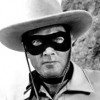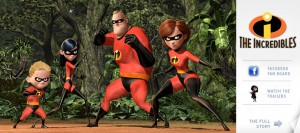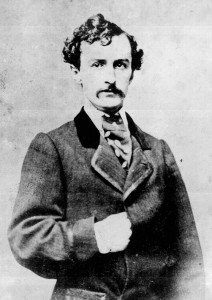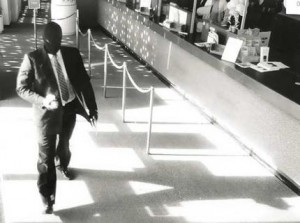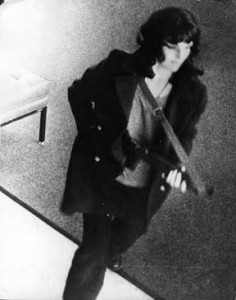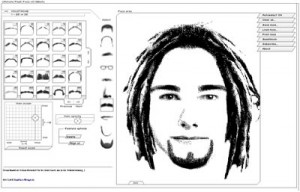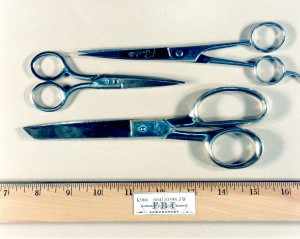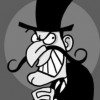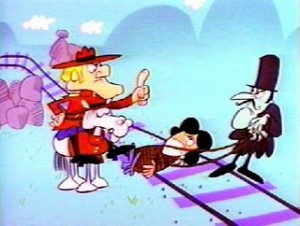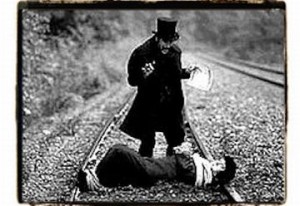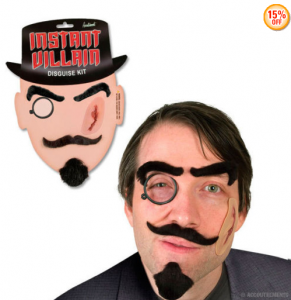Good Guys Wear Masks, Too
The mask is not, of course, solely a furnishing of villains; good guys need them too–for them anonymity allows them to function free of social entanglement. In Pixar’s The Incredibles (itself a melange of reference, meta reference, and meta-meta reference), while capes may be a point of contention, the mask is obligatory and ubiquitous. Mrs. Parr (whose marital status is an essential point of conflict, a fulcrum between the quotidian and the spectacular, as is post-super weight gain), when cutting the family loose as superheros, gives the mask over to her daughter like a royal scepter with a speech about the preciousness of her anonymity.
The Lone Ranger wore a mask, so essential to the story as to be invisible, possibly more so than Silver, the William Tell Overture–certainly not Tanto. So much so that Clayton Moore (the actor who played the original TV Lone Ranger) refused to part with his when signing autographs at car shows or presiding over the openings of shopping malls. Litigation ensued; ultimately stripped of his mask Moore opted for a pair of Foster Grant sunglasses.
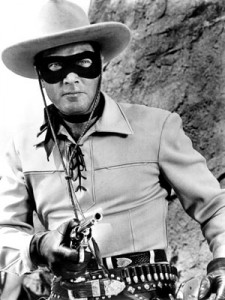
Zorro, Robin, Green Lantern, et al. While for good guys the mask is a component of the secret identity they guard so jealously, in the case of villains, the need for a disguise is more self-evident.
There are of course more elaborate disguises–such a Captain America’s striped cowl, or Batman’s–which include a pair of quasi-skeumorphic ears–or Spiderman’s total coverage. As noted in the prior installment, while a mask’s capacity to disguise seems to exceed its surface area, in Superman’s case it suffices to remove articles of clothing to disguise himself! Suspension of disbelief or confirmation bias?
The Everyday Villian
And there are famous non-disguised villains throughout history, among them Benedict Arnold, John Wilkes Booth (who, though largely uncostumed, did have the long moustache of Snidely’s ilk, and of course, Lee Harvey Oswald.
As a disguised but still “regular guy”-bad guy, the bank robber is an exception, for a number of reasons: the fact that they might like to repeat the act, the ubiquity of electronic surveillance and eyewitnesses, and the likelihood that they won’t stray as far. Their disguises are nevertheless quotidian: a simple hardware store-balaclava will suffice. Or sunglasses. A surgical mask. The classic nylons. Or, almost nothing at all. Oh–in a pinch, a simple plastic bag will suffice.
The Villain Denuded
Dillinger (and other infamous “career” thiefs like Clyde Barrows) and Patty Hearst are exceptions to the necessity of disguise. In the case of the former, their notoriety had a sort of terrorist and cause célèbre effect–plenty of either cowed or supportive eyewitnesses and little in the way of electronic surveillance of course. In the case of the latter, evidence of a kidnapping victim’s co-optation may have been seen to lend some additional legitimacy to the SLA’s rather muddled cause .
The Identi-kit and (The) Unabom(ber)
For an older set, the broadest exposure we might get in a concentrated amount of time was a gallery of wanted posters in a post office. A great many of these would be only sketches–where a photograph wasn’t available, a sketch from verbal descriptions would be made. And when an official artist wasn’t available, the “Identi-kit” might have been employed. Before computer software versions of basically the sqme thing, the Identi-kit was a combinatorial system for constructing images based on a finite series of facial features–a more everyday version of the “props of evil” combinations cited above.
One of the classic (and, hung in a post office, a bit meta-) suspects to be presented via sketch was the Unabom(ber). Though it’d be his writing style that ultimately led to his conclusive ID and capture, the sketch is a classic, combining a number of quotidian Bad Guy elements cited above for bank robbers, particularly the hoodie and the sunglasses.
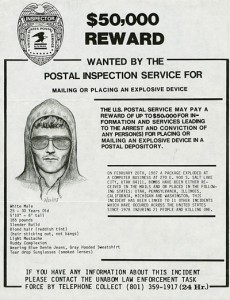
The Luddite and the Internet Wunderkammer
In a “final” irony, the U.S. Marshals auctioned off part of the evidence hoard online (including not only the manuscript of the manifesto, but most germane, a set of aviator-style sunglasses and a hoodie), and posted a Flickr set of the lots. At least from a spin perspective, the irony is deliberate:
We will use the technology that Kaczynski railed against in his
various manifestos to sell artifacts of his life. The proceeds will go
to his victims and, in a very small way, offset some of the hardships
they have suffered.
The photos have an evidentiary (with the requisite ruler–labeled “FBI” even) aspect that lends them a a curatorial beauty; virtually anything presented in this way is oddly engaging. The patina of time, the folds and wrinkles of use, the everyday presented without shadows or secrets gives even the most mundane objects a curious beauty.

